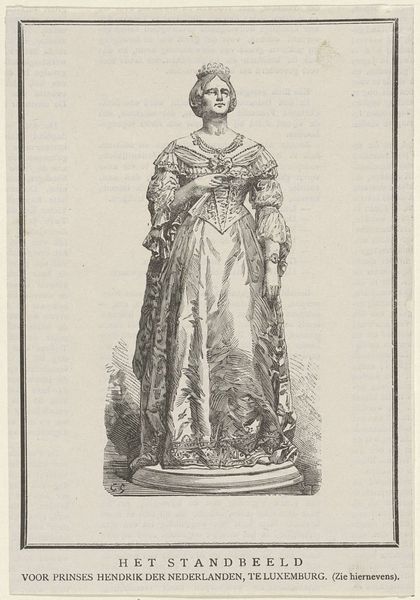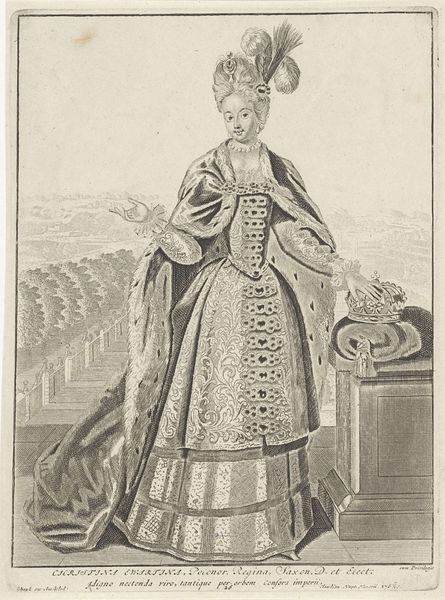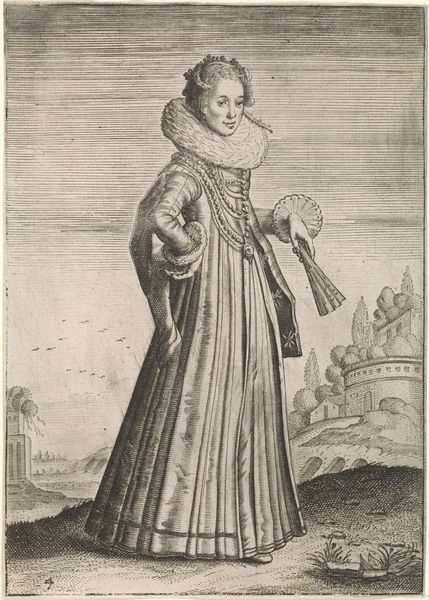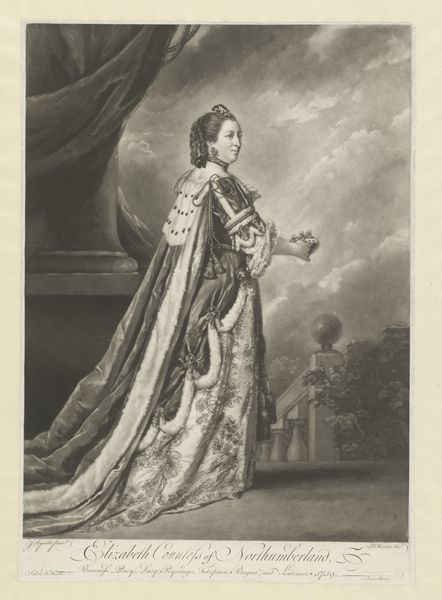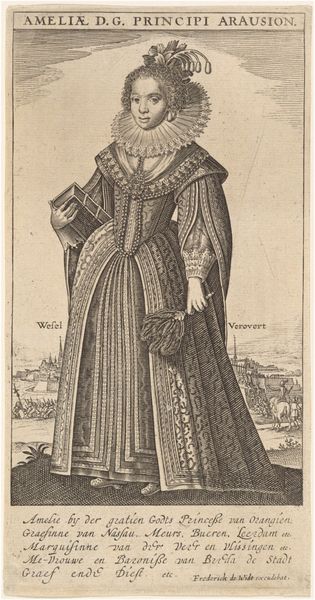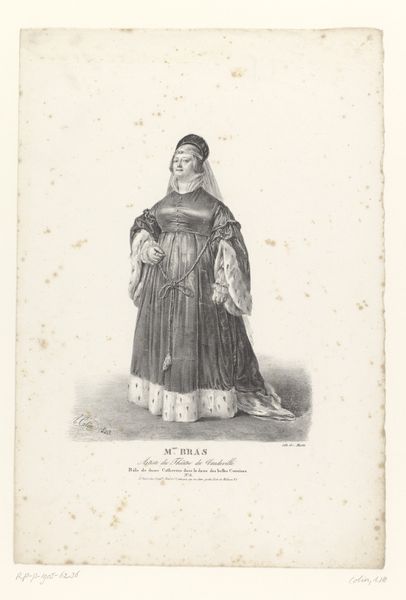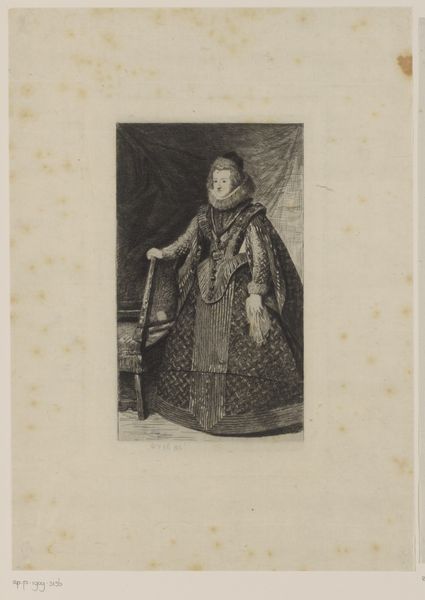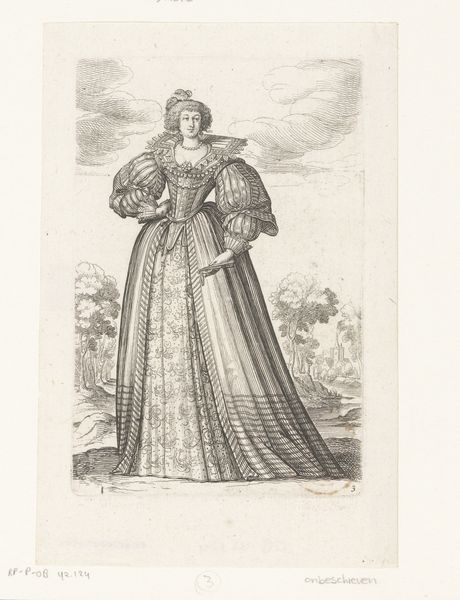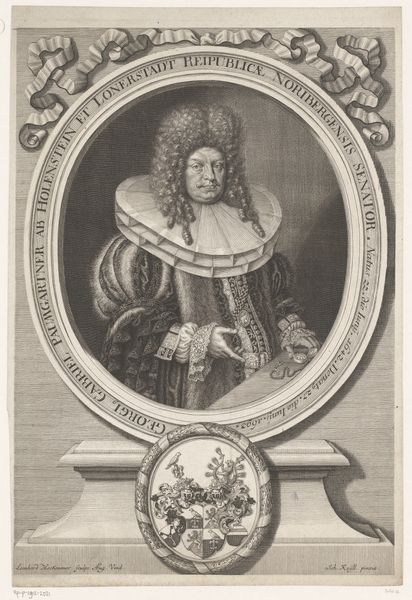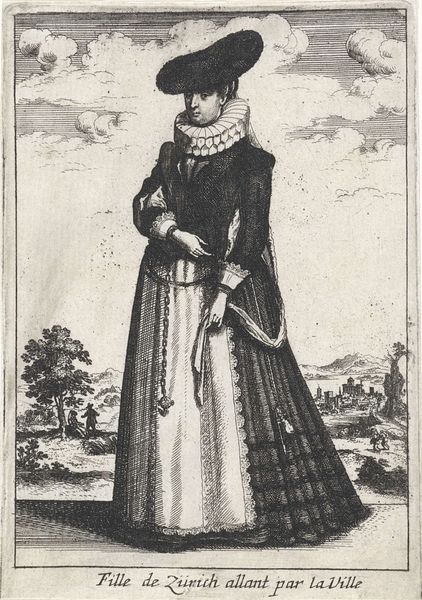
print, etching, engraving
#
portrait
#
baroque
# print
#
etching
#
old engraving style
#
history-painting
#
academic-art
#
engraving
Dimensions: height 346 mm, width 223 mm
Copyright: Rijks Museum: Open Domain
This print of Isabella of Castille was made by Gilles Rousselet in the 17th century. Observe the queen's attire, heavy with pearls and jewels, reflecting power and status. The pearl, often associated with purity and wealth, has roots stretching back to ancient civilizations, where it was believed to possess magical properties. Consider how this symbol of opulence echoes through time. In Renaissance portraits, pearls signified virtue and status. Yet, even earlier, the Roman historian Pliny wrote about the pearl representing the ultimate status symbol. This idea has survived the ages, transcending empires and resurfacing on runways and in modern media. Perhaps, subconsciously, we are drawn to these symbols not just for their beauty but for the weight of history they carry. They speak to our collective memory, engaging us on a visceral level, reminding us of humanity’s timeless pursuit of value and meaning. These symbols evolve and resurface throughout history, acquiring new layers of meaning with each iteration.
Comments
No comments
Be the first to comment and join the conversation on the ultimate creative platform.

